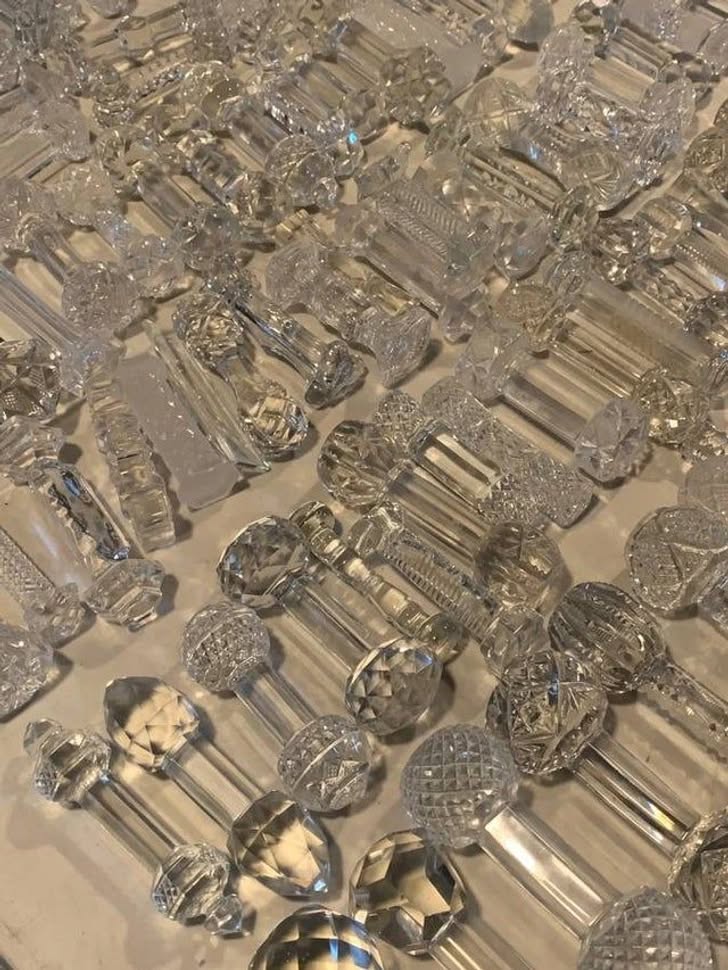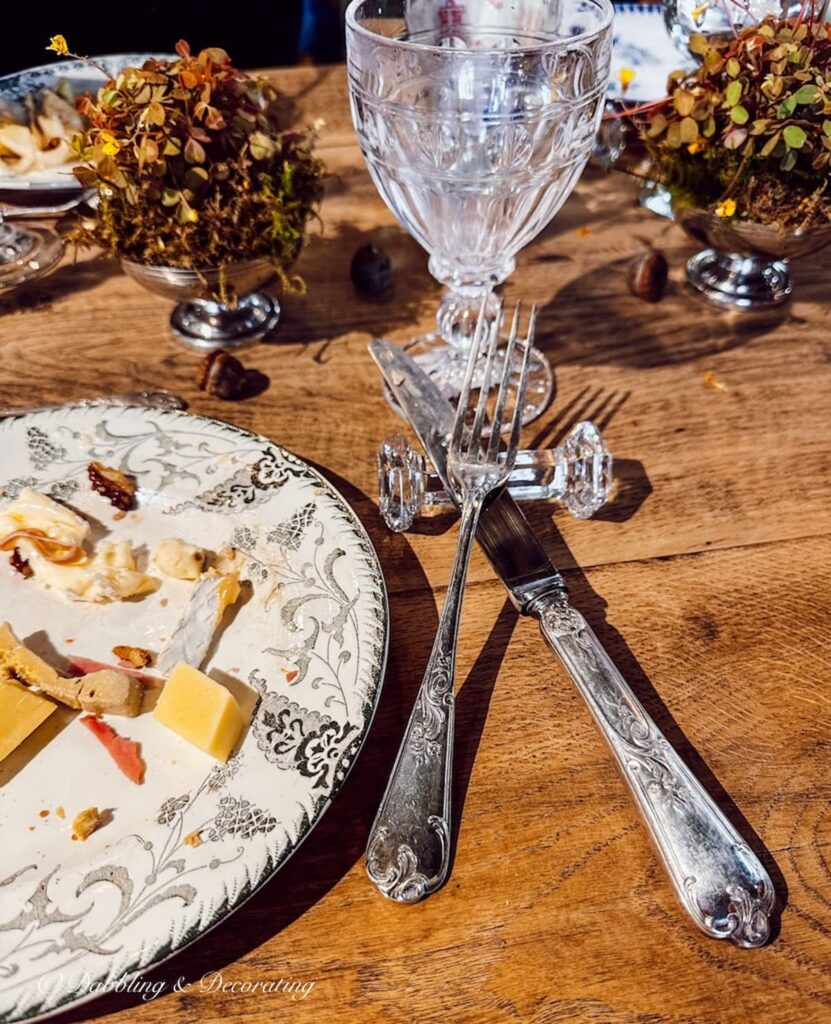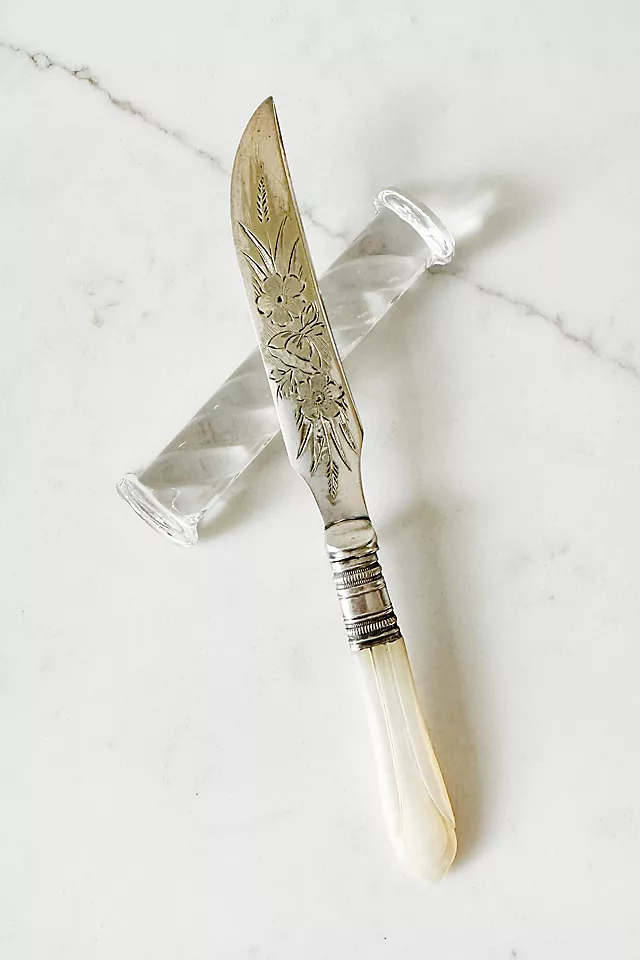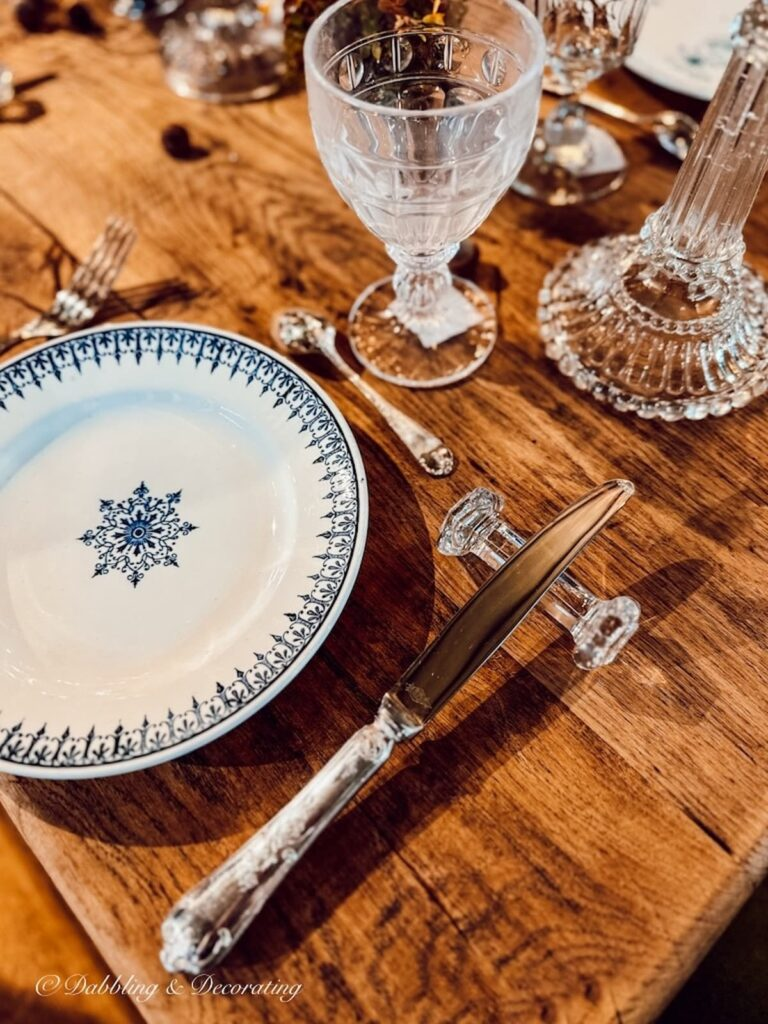At first glance, they look like little pieces of fine jewelry scattered across a table. Gleaming crystal rods, sparkling in the light, almost too pretty to touch. If you’re thinking they’re just fancy decorations, think again. These tiny masterpieces actually had a very practical purpose — and it’s one that most people today wouldn’t even imagine.
Get ready to dive into the forgotten world of crystal knife rests, a relic of sophisticated dining that deserves a serious comeback!

What Are Crystal Knife Rests?
You might be wondering: What exactly is a knife rest? Honestly, it’s one of those tiny details that tells a huge story about how people lived — and dined — in the past.
A knife rest is a small, often beautifully designed object placed beside a dinner plate. Its job? To keep your knife (or sometimes your fork or spoon) from touching the tablecloth after you’ve started eating.
Sounds simple, right? But think about it: in the days of crisp, white linen tablecloths and multi-course meals, protecting that pristine setting was a big deal. And that’s where these crystal gems came in — a perfect blend of beauty and function.
Video: Knife Rest French Table Silver and Crystal Ideas
A Glimpse Back in Time: Knife Rests in History
Let’s rewind a little. In the 19th and early 20th centuries, dining wasn’t just about eating — it was an art form.
Formal dinners were extravagant affairs, often stretching for hours across 8, 10, sometimes even 15 courses. Each course required different utensils, and every detail mattered.
Why Knife Rests Were Essential:
- Tablecloths were expensive and hard to clean.
- Leaving a used knife directly on the table could stain or soil the cloth.
- Proper etiquette demanded cleanliness and grace.
Knife rests solved all those problems. Instead of smearing gravy across Grandma’s heirloom tablecloth, you simply placed your knife across the crystal rest — elegant, tidy, and impressively polished.

The Design and Craftsmanship Behind These Tiny Works of Art
One of the coolest things about knife rests? They weren’t just practical — they were downright gorgeous.
Materials and Designs:
- Crystal: The crème de la crème! Beautifully cut crystal knife rests sparkled like tiny stars on the dinner table.
- Silver and Porcelain: Some were made of fine silver or delicate hand-painted porcelain for extra opulence.
- Shapes and Styles: Designs ranged from simple rods with round ends to elaborate figurines shaped like animals, flowers, or geometric patterns.
Many of these rests were handmade by skilled artisans, meaning no two were exactly alike. It’s like having a miniature sculpture beside your plate — a conversation starter before the conversation even started.

Why Crystal Was the Top Choice
So, why crystal? Good question!
Crystal was the ultimate symbol of refinement. It caught and reflected the candlelight in dazzling ways, adding a magical twinkle to the table setting. Plus, it was heavy enough to stay put when cutlery rested on it, but delicate enough to scream “luxury.”
If you were invited to a formal dinner with crystal knife rests, you knew you were somewhere truly special.
The Slow Fade of the Knife Rest
As beautiful and functional as they were, crystal knife rests didn’t stand the test of time. Why?
Lifestyle Changes:
- Dining became more casual over the 20th century.
- Dishwasher-safe tableware replaced the obsession with preserving tablecloths.
- Fewer multi-course formal dinners meant less need for elaborate table setups.
Cultural Shifts:
- Time-crunched modern life traded long, leisurely dinners for quicker meals.
- Dining etiquette relaxed. Elbows on the table? No big deal. Knife rests? What are those?
And so, these tiny sparkling treasures quietly disappeared from everyday life, tucked away in antique shops and collectors’ cabinets.
Video: Vintage Lalique Crystal Knife Rests, Set of 4, ca. 1970s – 80s
Spotting Crystal Knife Rests Today
If you stumble upon one of these shimmering relics, how can you tell what you’re looking at?
Key Characteristics:
- Two raised ends: Shaped to keep the knife elevated off the table.
- Horizontal “bar” in the middle: Sometimes smooth, sometimes etched with intricate designs.
- Solid, heavyweight feel: Real crystal has a satisfying heft and sparkle that glass just can’t match.
- Artful cuts and patterns: Faceted designs that catch and scatter the light.
Often mistaken for small paperweights or random decorative objects, knife rests are little hidden treasures waiting for someone to recognize their story.
Bringing Back the Elegance: Knife Rests in Modern Times
Believe it or not, there’s a growing trend toward reviving the art of elegant dining — and knife rests are sneaking back onto stylish tables!
Here’s why:
- Vintage is cool again. Retro table settings are trendy, especially for weddings, dinner parties, and holiday feasts.
- Practical luxury. Who doesn’t love a clean tablecloth and polished presentation?
- Conversation starters. Guests are naturally curious when they spot these sparkling little objects next to their plates.
Whether you’re hosting a fancy dinner or just want to add a pop of class to your next Sunday brunch, crystal knife rests can instantly elevate the vibe.

Fun Facts About Knife Rests You Probably Didn’t Know
1. Knife rests had their own etiquette manuals.
Back in the day, there were specific rules about how and when to use knife rests — part of the intricate ballet of fine dining.
2. Some rests were personalized.
Wealthy families often commissioned custom knife rests engraved with family crests or monograms.
3. They weren’t just for knives.
In very formal settings, there were even special rests for spoons, forks, and dessert utensils!
4. Japan took knife rests to another level.
In Japanese culture, chopstick rests (hashioki) serve a similar purpose — proving that the concept of keeping utensils tidy crosses cultural boundaries.
5. They’re highly collectible today.
Collectors treasure antique knife rests, especially rare crystal versions or those crafted by famous artisans like Baccarat or Waterford.

Why You Should Care About These Forgotten Beauties
You might be asking yourself, “Okay, but why should I care about some fancy old dining accessory?”
Because they tell a bigger story — about attention to detail, craftsmanship, and the shared human love of gathering around a table.
They remind us that meals weren’t just about fueling up — they were about creating beautiful experiences, showing hospitality, and celebrating life’s moments with a little extra sparkle.
In today’s busy, disposable world, pausing to appreciate something as small as a crystal knife rest feels almost revolutionary, doesn’t it?
Conclusion: A Little Piece of Elegance Worth Remembering
What looks like a handful of glittering trinkets is actually a window into a more gracious, thoughtful way of living. Crystal knife rests were tiny heroes of the table, balancing beauty and practicality in a way that’s rare today.
So next time you come across one at a flea market or antique store, don’t just walk by. Pick it up. Feel the weight. See how the light dances across its facets.
Because hidden in that little piece of crystal is a story — one of elegance, history, and the simple joy of a well-set table.